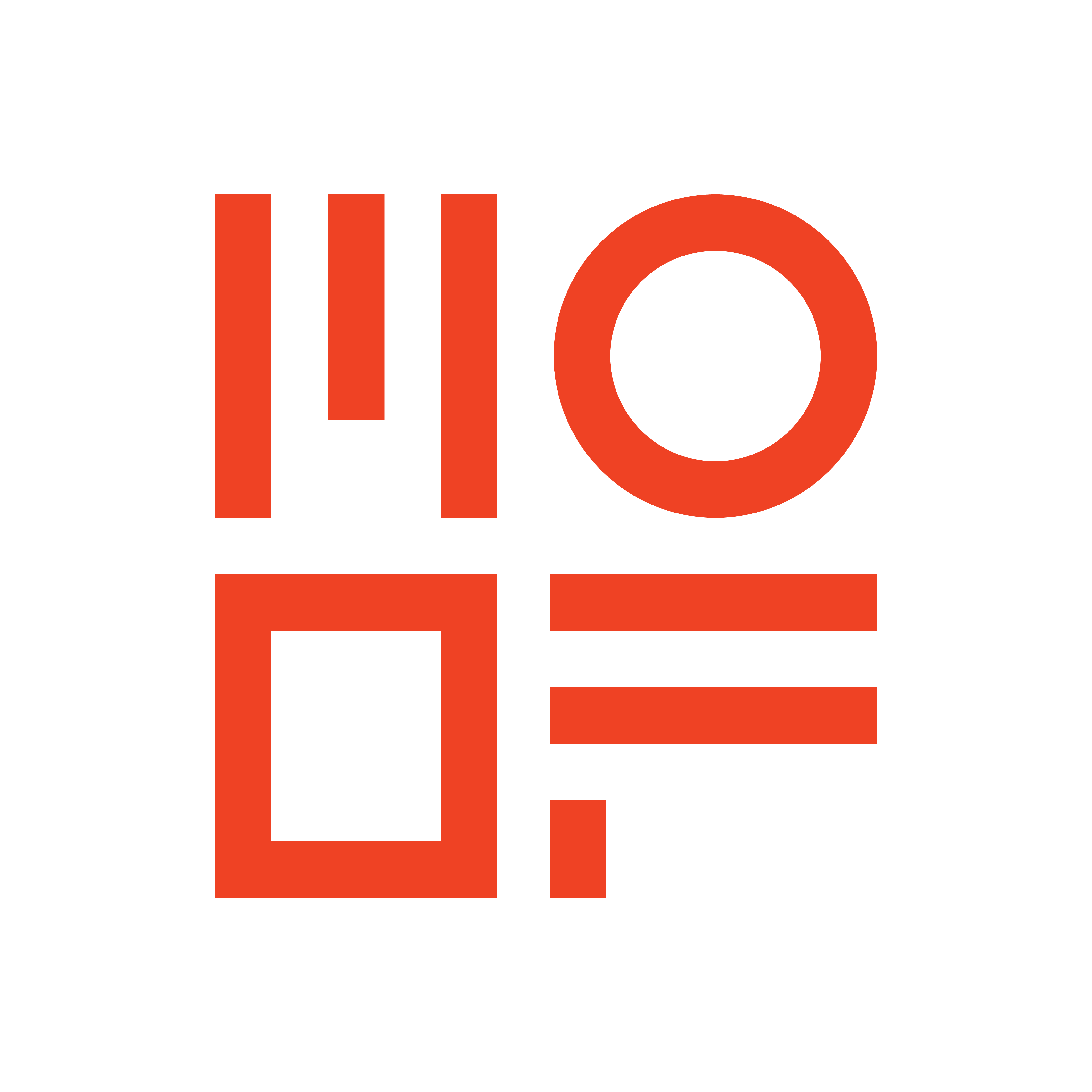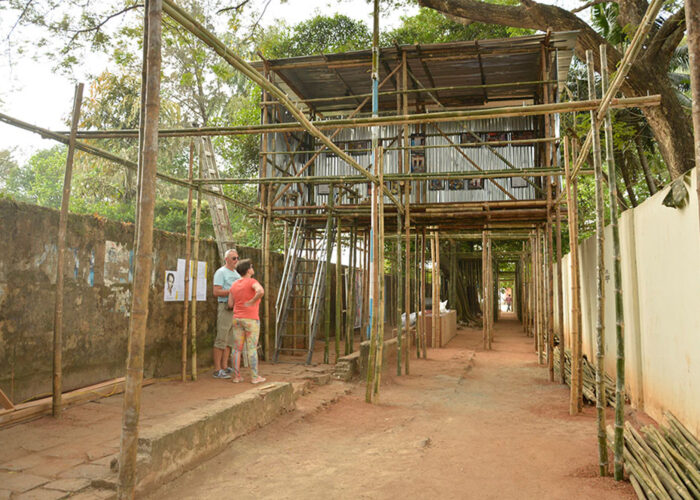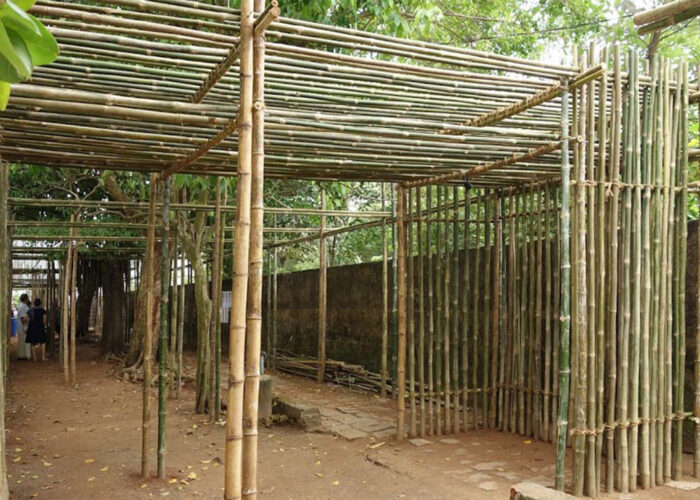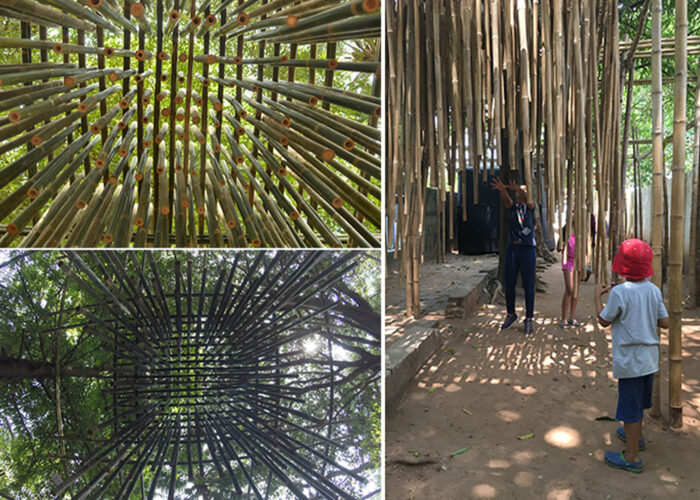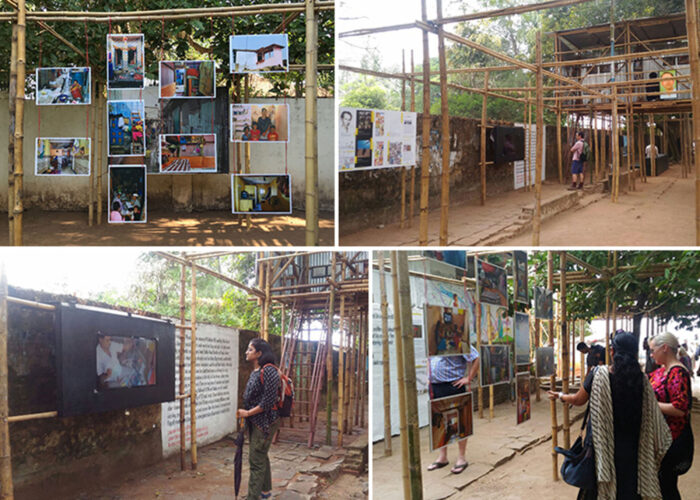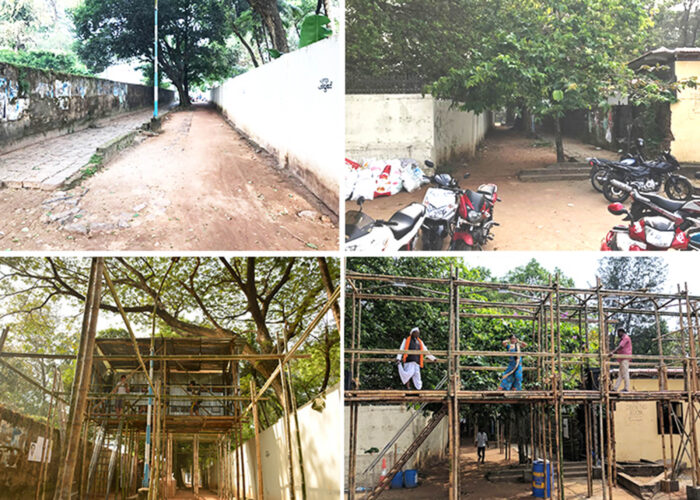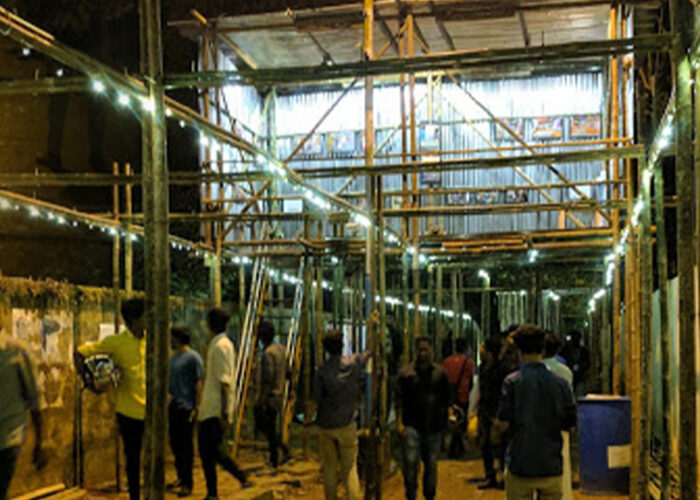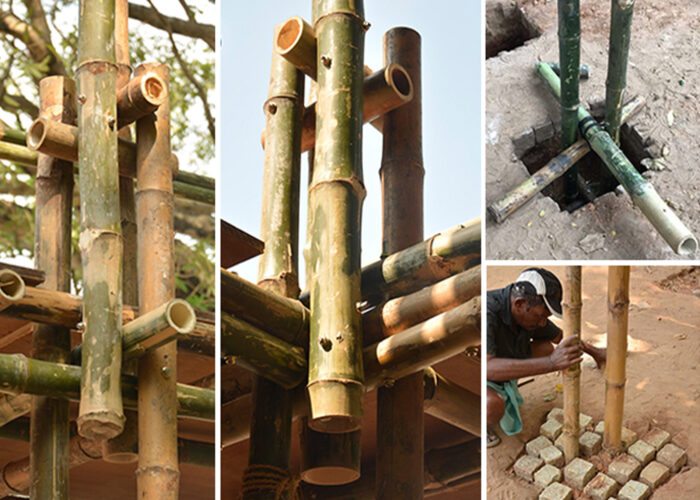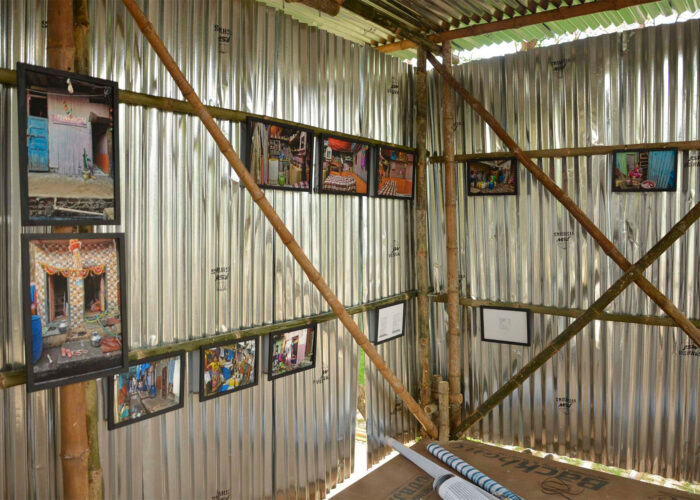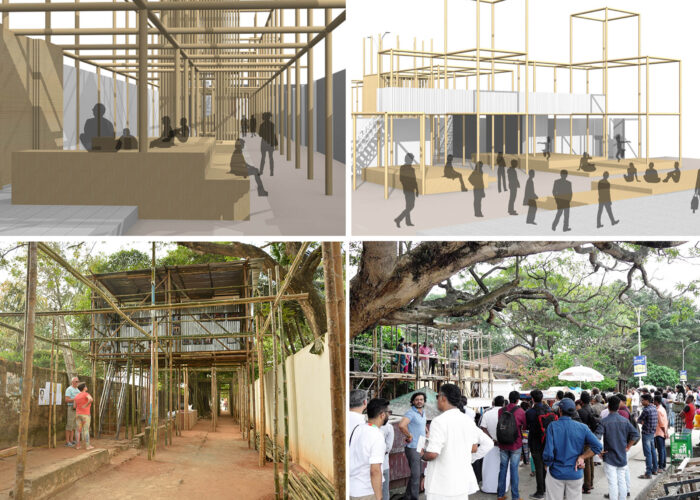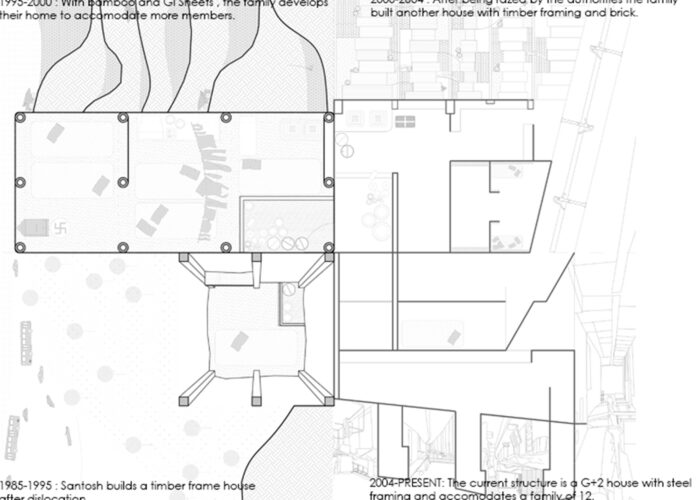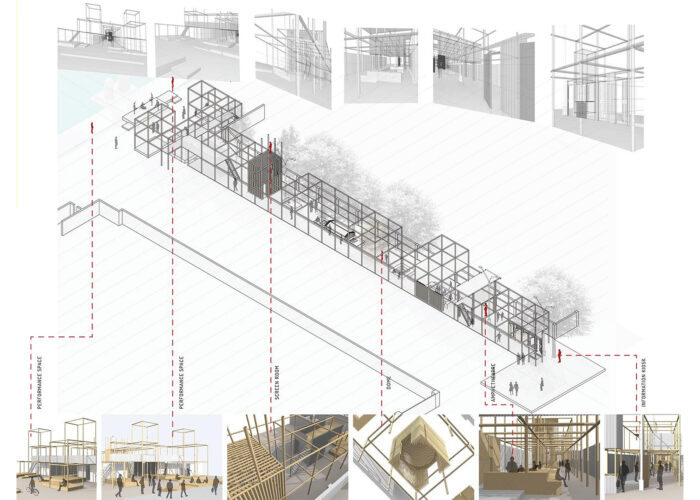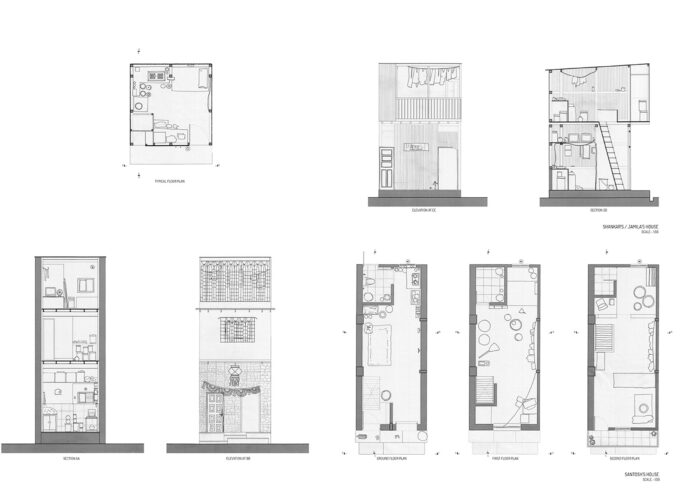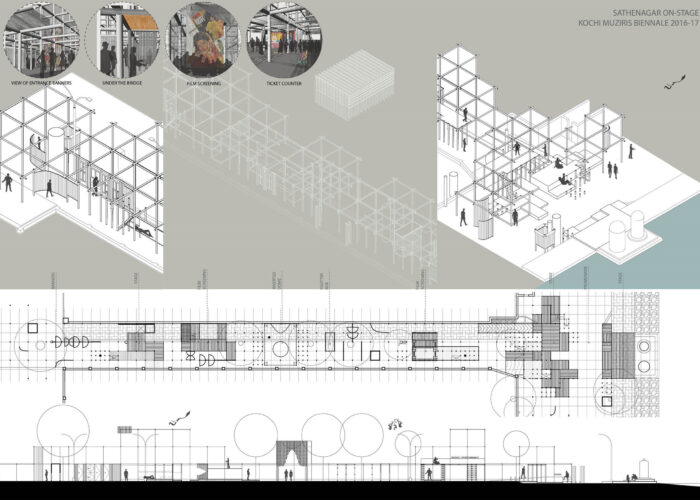Educational
Kochi Biennale – On Stage : Sathenagar Here
In collaboration with SAMOOHA (Santosh Thorat, Jameela Begam, Vyjayanthi Rao, Manisha Agarwal, Aparajita Basu, Anand Patel, Shantanu Poredi)
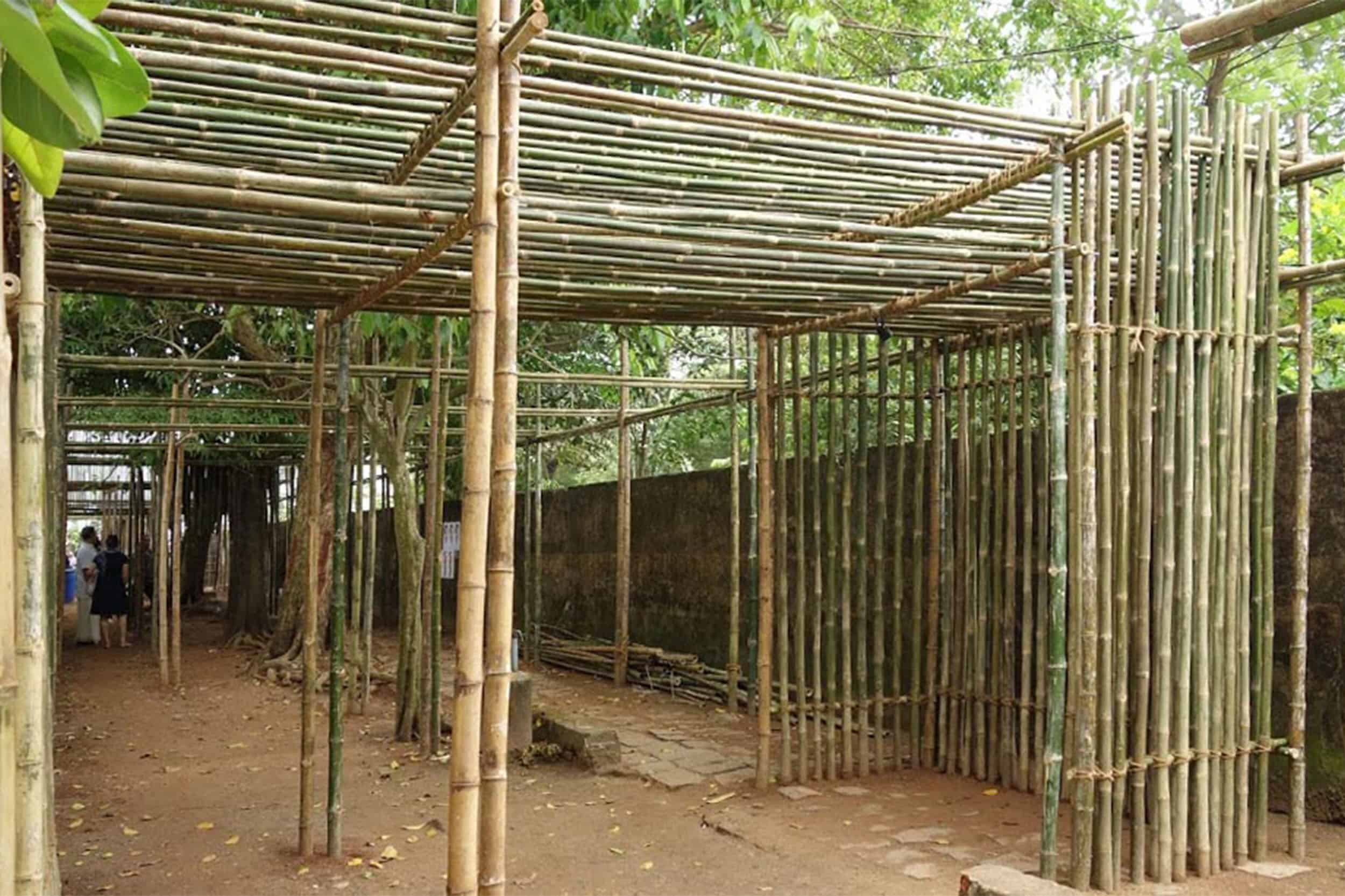
Background
On Stage is a large-scale interactive architectural installation, created for the Kochi-Muziris Biennale.
The Team
MO-OF was a part of Samooha – an informal, interdisciplinary team of seven, including two community leaders, four practicing architects and a cultural anthropologist specializing in urban studies. This project is formulated from a year-long interactive process between the Samooha team and the residents of Sathenagar.
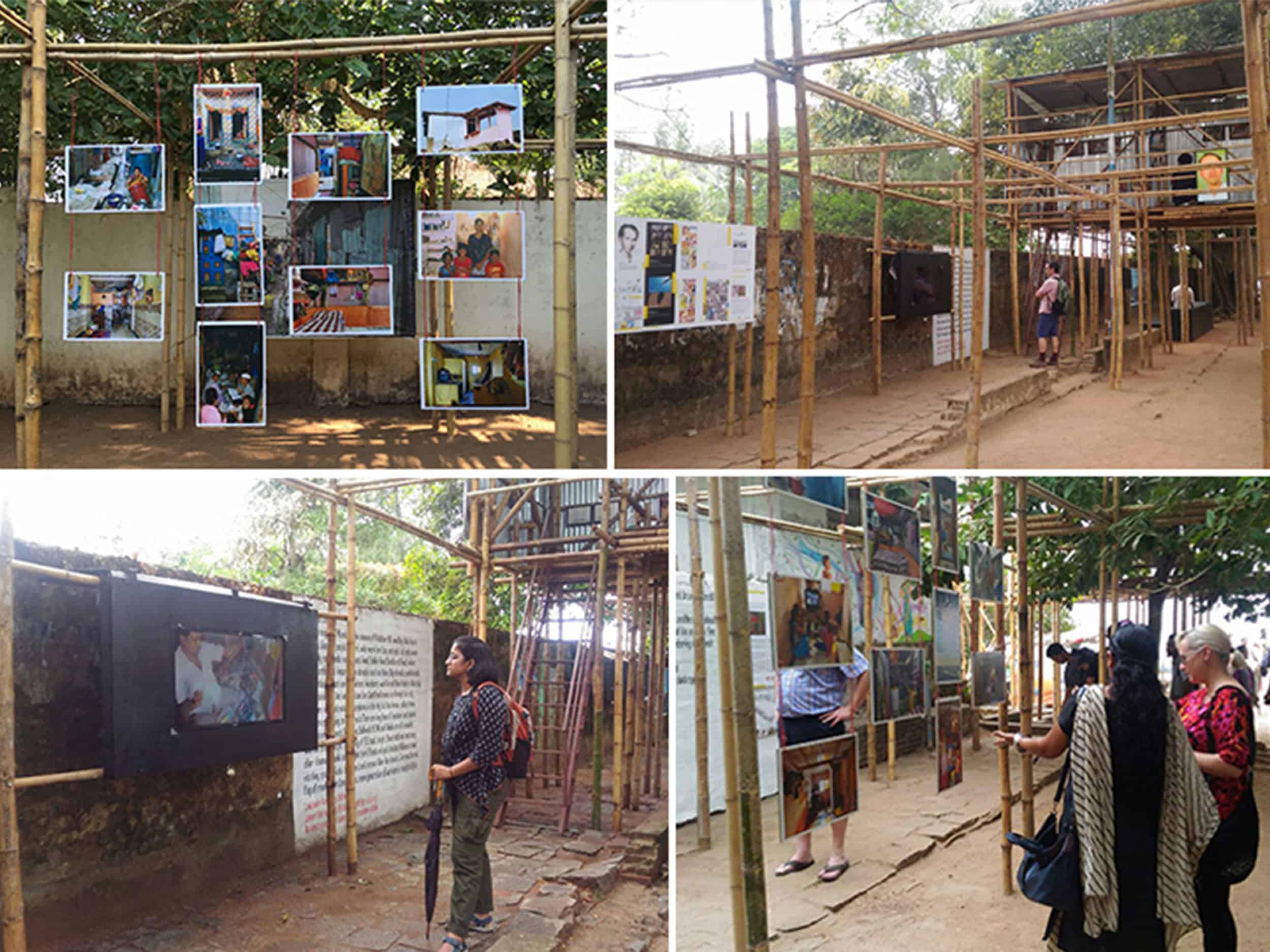
Concept and Design
‘On Stage: Sathenagar Here’, was envisioned as a public space for a series of performances, visual and discursive events about the nature of life, work and culture in informal communities. Focusing on the principles of self-reliance, self-expression and self-making as they find their way into new visions for transforming society. It serves as a framework for dialogue between the communities of Sathenagar, Kochi and those visiting the Biennale. Drawing on ethnographic research on informal urban cultures, our project imagines the city itself as a studio – as an actor within the work of art and as an element that enables the work of art to emerge. On Stage is therefore an emerging and evolving community space whose audiences will encounter variations in form and content, sometimes subtle and sometimes palpable but always artful.
We modeled the physical and emotional terrains of Sathenagar as representations of what exists and as projections of aspirational transformations. It recalls spatial conditions observed at Sathenagar, setting up a dialogue between the aesthetic principles of formal architectural practices and informal cultures of building, crafting and making.
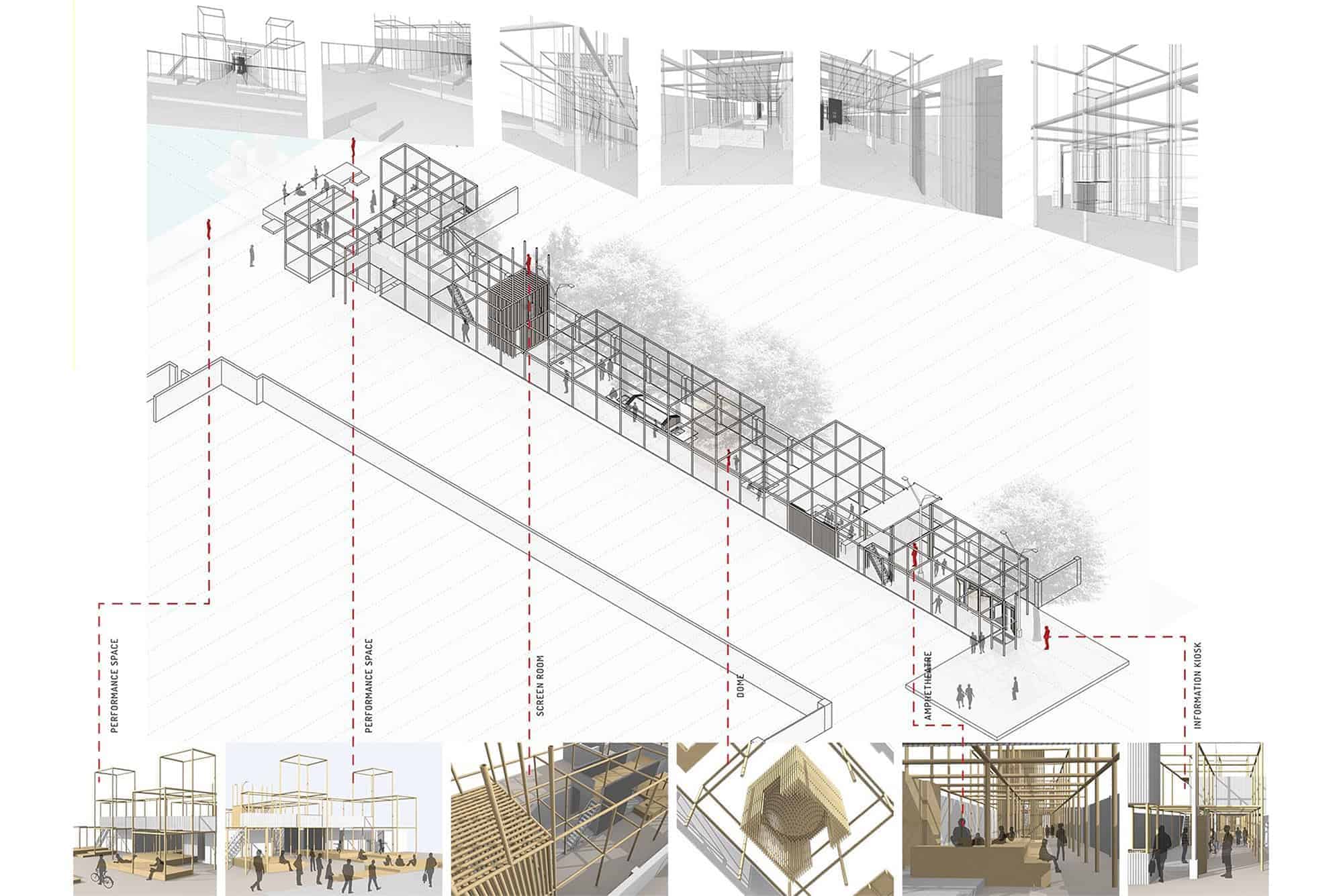
Our bamboo construction extends across a 60-meter public access lane in Fort Kochi, the main thoroughfare to the seafront promenade. It serves as a stage within the larger stage of the Biennale. A self conscious space for exploring creativity within every aspect of the mundane daily life, where one might explore (or choose to relocate) flows of language, heritage, tradition and practice. The bamboo frame is an incubator, a mechanism to organize and orchestrate open-ended possibilities for collective engagement created in a material that initiates settlement in informal communities across India.
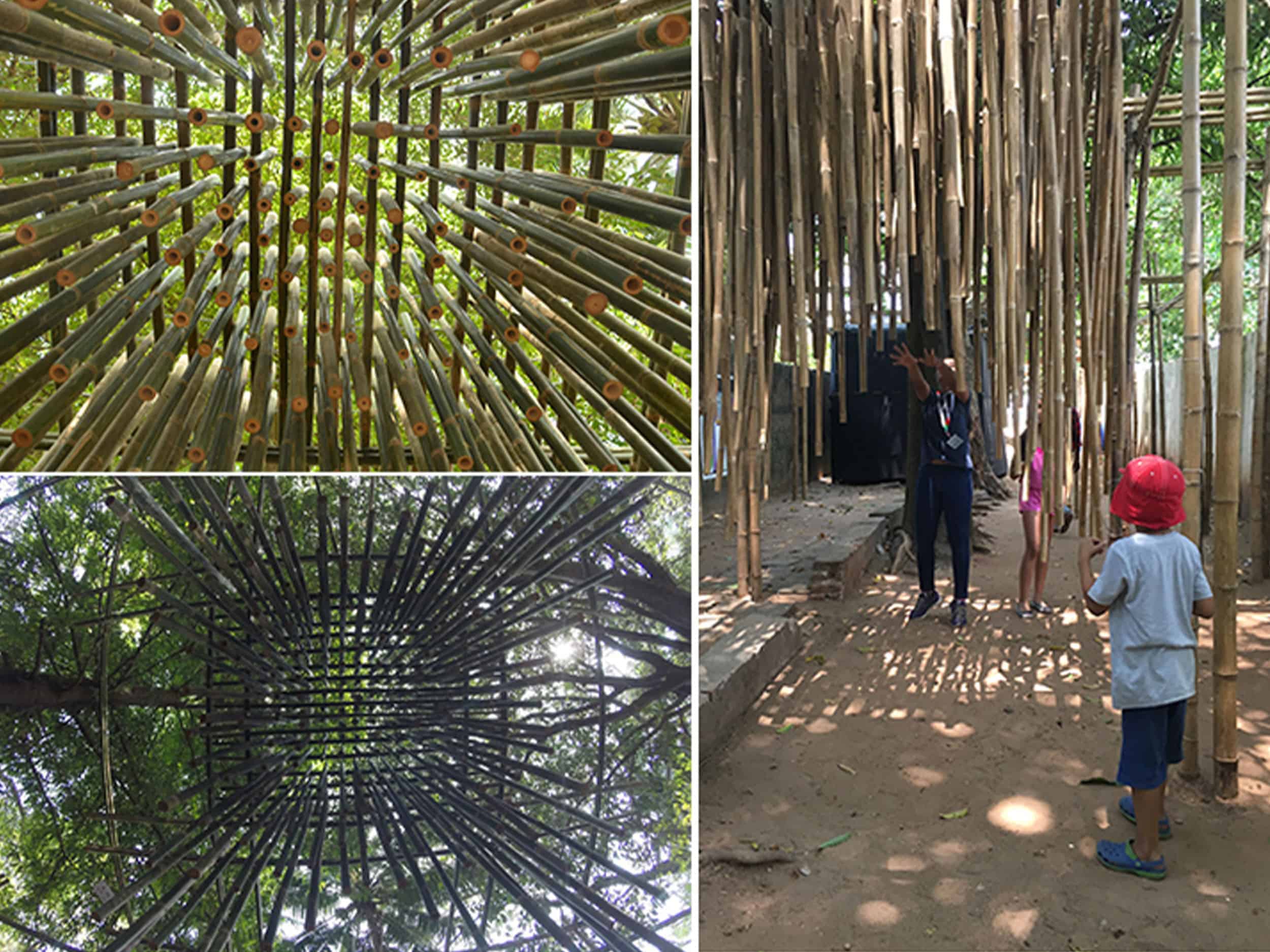
Process
The spaces, composed with a series of photographs, videos and soundscapes and performances documenting life in Sathenagar. Knitted around a series of interfaces where visitors encounter visual and oral stories from Sathenagar, it layers the existing public space of the lane with programs created by artists from Sathenagar reflecting local cultures of settlement, construction and social action. Beyond the Biennale, this project is conceived as a model for enabling residents of informal settlements to become authors and protagonists of their own stories in public contexts while creating new ways for the public to experience conditions in which art and life become possible for millions of India’s city dwellers.
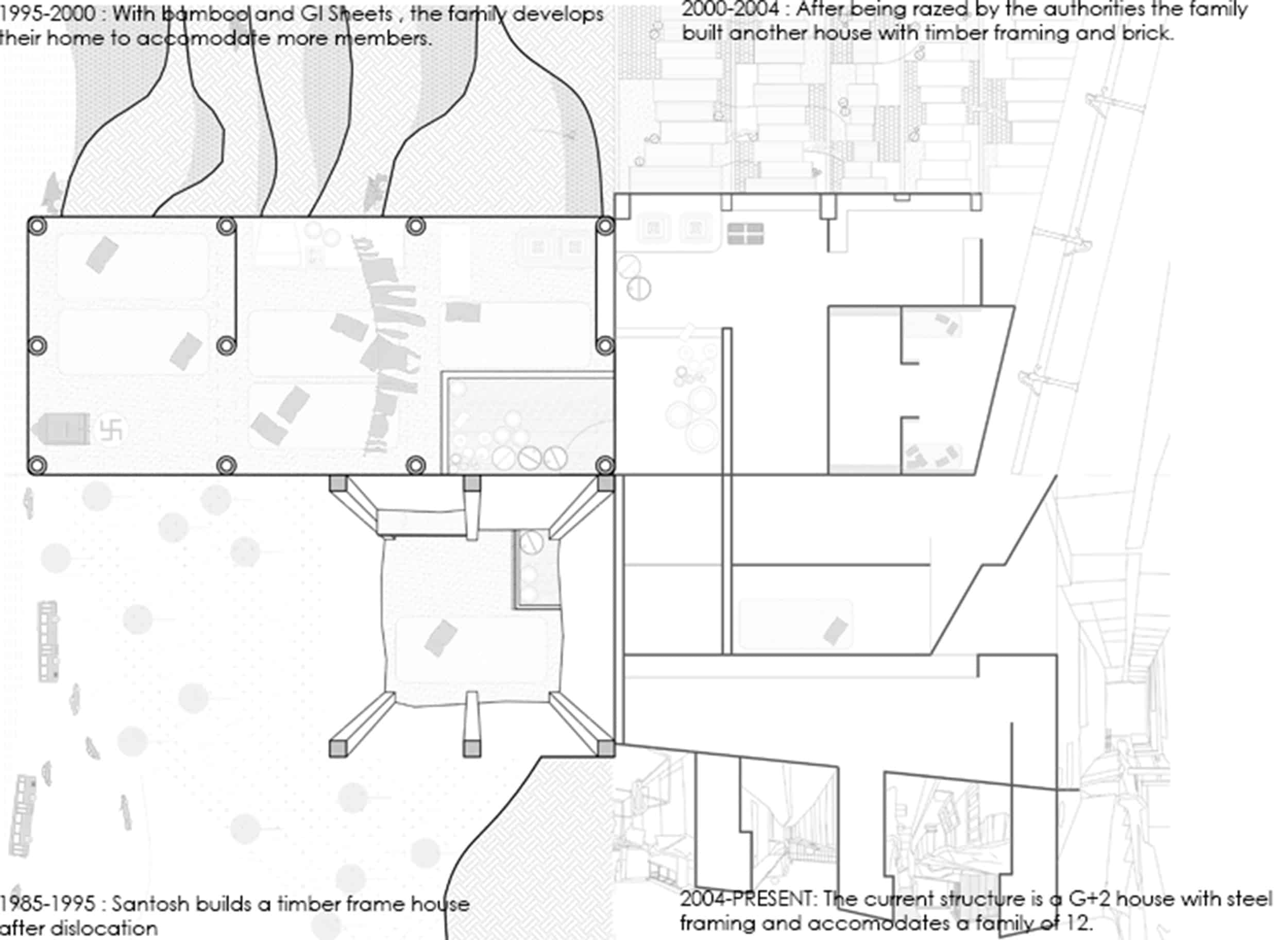
Special features
Innovation and resource and environmental performance
Our first innovation is in the use of participant observer methodology to uncover the spatial complexity of informal settlements. Constantly threatened by the possibility of demolition, residents invest money and labor in their homes and in activating residual spaces with a variety of cultural programs bringing joy, celebration and philosophical reflection to communities struggling for survival. This link between spatial and social complexity directed us to focus on the stage as central to the architecture of everyday life. Second, our choice of bamboo as a material reflects on its ubiquity as a material of initial settlement and equally its rarity as a material for sustainable growth. We demonstrate its longevity through innovative building techniques. In sum, our work rethinks the temporary and the permanent and the necessary and the insignificant in architectural programs in its use of materials and through its methodology.
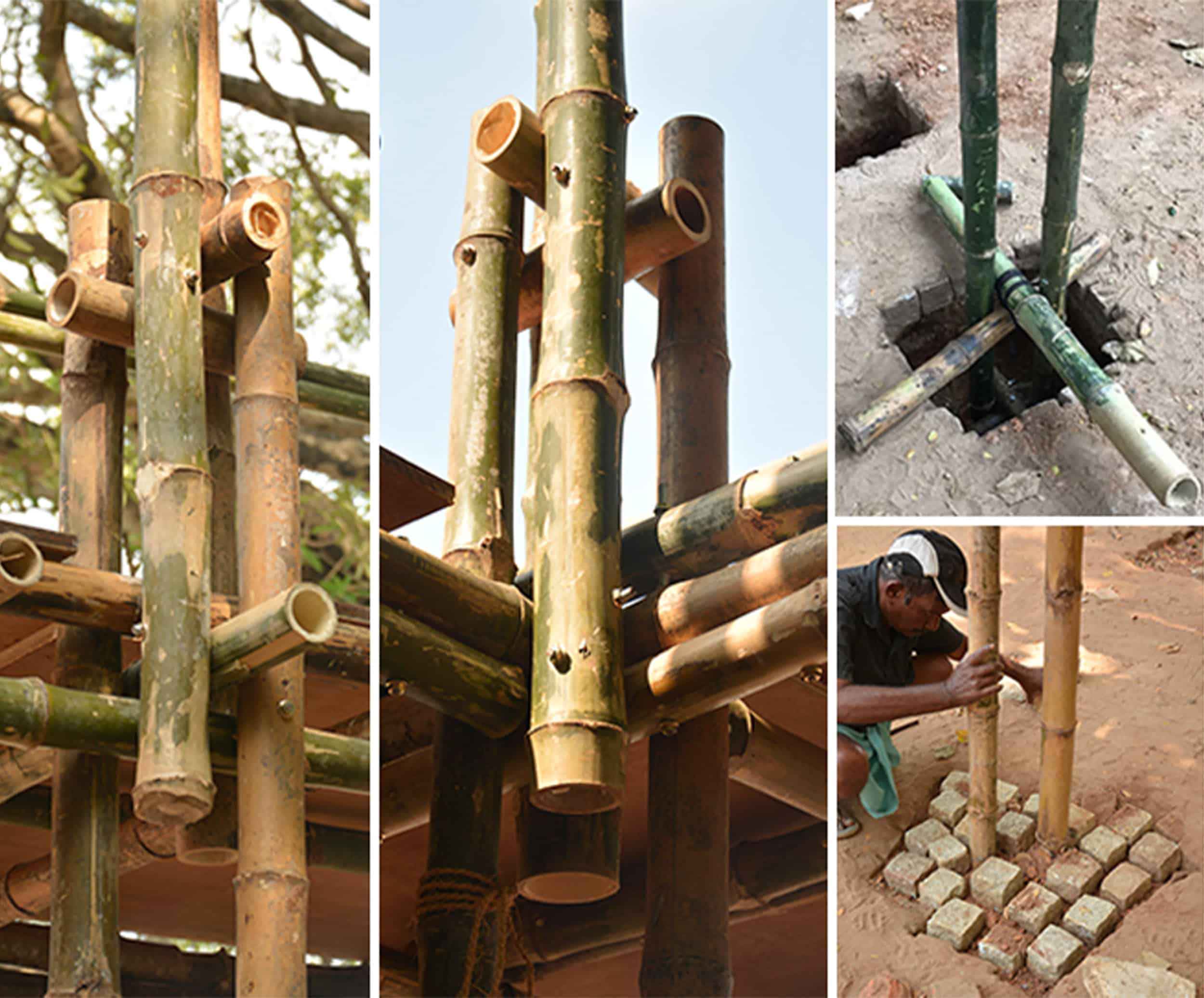
Ethical standards and social inclusion and contextual and aesthetic impact
Our architectural project presents an ongoing engagement with people – both residents of Sathenagar and viewers in Kochi – as a work of art. Rather than adapting a community’s creative practice to create representations of our own, we adopted the stance of collaborators and critical bystanders, supporting the creative self-presentation and self-expression of the community itself. For Sathenagar residents, the project provides a unique context to explore their creative heritage and the potential to bring about an inclusive society not just for themselves but for the city as a whole. It also presents the opportunity to blur the boundaries between the exclusive contexts of ‘high’ art and those of popular, public culture by occupying public space with an interactive infrastructure generated by and generative of collaborations across social groups and disciplinary practices.
Economic viability and compatibility
Our installation draws on three principles – self-reliance, self-building and self-expression –central to the life-worlds of informal settlements. The structure itself foregrounds the street as a dynamic set of relations that are materialized in interactions with the installation. The project’s generative architecture recalls the social form of the city where agonistic yet convivial interaction are the only possible modes of being together. We believe that inclusive cultural forms also strengthen the economic viability of marginalized communities. Self-expression cultivates and promotes self-reliance that in turn allows economic ambitions to grow stronger roots. Our project materializes the centrality of the imagination in the political economy of the city and presents new understandings of architecture itself as a sustainable and performative art.
